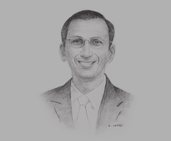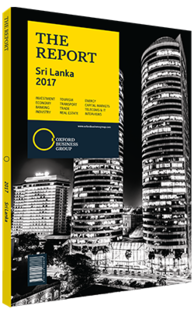Sujeewa Mudalige, Managing Partner, PwC: Viewpoint

Viewpoint: Sujeewa Mudalige
Taxation continues to the principal instrument of mobilising revenue for financing public expenditure. In addition to serving this primary function, the Sri Lanka tax system has been harnessed over the years to serve the economic and social policy objectives of the government, both as a means of promoting capital formation and investment, thereby providing a conducive climate for economic growth, as well as targeting the redistribution of income and wealth.
The conventional approach is to classify taxes as direct and indirect. Direct taxes, primarily on income and wealth, rest with those who are called upon by law to pay them; while indirect taxes, largely on consumption, fall upon the consumer, who invariably shoulders the burden when prices of goods and services are increased. The tax system in Sri Lanka is weighted heavily in favour of indirect taxes, and they account for more than 80% of the total revenue yield. It is accepted that indirect taxation contains regressive elements and, accordingly, there is some concern in this regard.
The government has, on many occasions, stressed the need to bring the ratio of direct to indirect taxes to 40:60. The reality is, however, that indirect taxation is perhaps the only means of reaching the vast majority of Sri Lanka’s population, which includes a wide informal sector and several hard-to-tax groups. Revenue mobilisation from direct tax sources will need a significant thrust to reach the 40:60 ratio of direct and indirect taxes, requiring reforms to the direct tax system and strengthening enforcement.
Over the years we have witnessed a declining trend of revenue as a percentage of GDP, from 19% in 1990 to a low of 11.5% in 2014, while over the same period per-capita income has increased. In 2015 there was a reversal, with the revenue-to-GDP ratio climbing to 13%. This was, however, due to the introduction of one-off taxes, mainly the super gain tax and enhanced duties on motor-vehicle imports. This downwards trend has raised issues in regard to the effectiveness of the current tax system and the administrative capacity and quality of the administrators.
The reasons for this relative decline in revenue generation are several. The central bank’s “Annual Report 2015” points to the complex tax system, relatively narrow revenue base, low tax compliance and weaknesses in tax administration as some of the key factors.
Widespread tax evasion is considered to be the main reason for the failure to assess and collect tax. The precise extent of tax evasion is difficult to determine; yet the limited coverage of two principal taxes – income tax and value-added tax (VAT) – is a clear indication of large-scale tax evasion. There is a large and ever-widening informal sector that remains outside the tax net. There are also many hard-to-tax groups, including professionals. Measures to combat tax evasion by strengthening enforcement should figure prominently in the strategy to enhance revenue collection.
However, a more important reason for declining revenues is the high revenue cost incurred by the erosion of the tax base, pursuant to the proliferation of tax incentive legislation, which was enacted to foster capital formation and investment, on top of existing tax exemptions, deductions and preferential rates. In 2014 PwC conducted a major study for the World Bank on tax expenditure in Sri Lanka to ascertain the revenue leakage as a result of the vast array of tax incentives, exemptions and concessions on offer since 1990. With respect to income tax, the analysis assessed the revenue impact of tax holidays and partial tax holidays, preferential tax rates, exemptions to specified sources of income, double deductions from gross income, accelerated depreciation and qualifying payment relief. With respect to VAT, an ever-widening VAT-exempt list with nearly 500 items of exempt goods or services was found. Customs duty revenue had suffered as a result of duty waivers being liberally granted. The position with respect to the Nation Building Tax, excise (special provisions) duty and other import levies was similar.
You have reached the limit of premium articles you can view for free.
Choose from the options below to purchase print or digital editions of our Reports. You can also purchase a website subscription giving you unlimited access to all of our Reports online for 12 months.
If you have already purchased this Report or have a website subscription, please login to continue.

